Table of Contents
Debussy plays Debussy: his own works (between 1904 and 1913)
Please, subscribe to our Library.
If you are already a subscriber, please, check our NEW SCORES’ page every month for new sheet music. THANK YOU!
Clair de Lune
The third and most famous movement of Suite Bergamasque is “Clair de lune”, in D♭ major. It is written in 9/8 and marked andante très expressif. Its title, which means “moonlight” in French, is taken from Verlaine’s poem “Clair de Lune“. It is not to be confused with the two settings of the poem composed by Debussy for voice and piano accompaniment.

French composer Claude Debussy’s best-loved piano piece, Clair de Lune, has entered popular consciousness thanks to its regular performance. Its origins are complex and fascinating, combining influences from poetry, the music of the Baroque period (from around 1600 to 1750), and Impressionism, a style in music following on from that in visual arts.
The piece’s title, meaning “moonlight”, was added shortly before its publication in 1905 as the third movement of a four-part work called Suite Bergamasque. It was the same year Debussy’s beloved daughter, Claude-Emma, known as Chouxchoux, was born.
The title comes from a poem of the same name, published in 1869, by the Symbolist poet Paul Verlaine. Debussy had already set this poem for voice and piano twice before, along with 18 other Verlaine poems. The poem speaks of “au calme clair de lune triste et beau” (the still moonlight, sad and lovely).
It also describes “charmante masques et bergamasques”, which may have inspired the name of the whole suite. “Bergamasques” refers to masked festivals in the ancient Italian theatre tradition, common also through France, using archetypal peasant characters such as Harlequin, Columbine and Scaramouche from the town of Bergamo.
Debussy’s music was a turning point from the Romantic music that had dominated the 19th century to the music of the 20th century. When asked what rule he followed, he scandalized his harmony teachers by answering: “Mon plaisir” (My pleasure).

With fellow composer Maurice Ravel, Debussy is regarded as a leader of French Impressionism. Although Debussy disliked this term as applied to music, it is accepted now to refer to the composers’ use of harmony and texture in a way that recalls the light and color of Impressionist painting.
Debussy’s iconic orchestral piece La mer, also published in 1905, used Hokusai’s Great Wave on the cover, an artwork that directly inspired painters like Van Gogh. Another piece, Reflets dans l’eau (Reflections in the Water), seems to embody Impressionist qualities of glinting light and detached observation of nature rather than human participation, much as in Monet’s paintings of water lilies.
Poetry in music
The original title of Clair de Lune was actually Promenade sentimentale (Sentimental stroll), after a different Verlaine poem from an 1866 collection called Paysages tristes (Sad Landscapes). This poem is more likely to have been the inspiration for the music. The poem begins: “Le couchant dardait ses rayons suprêmes Et le vent berçait les nénuphars blêmes” (The setting sun cast its final rays And the breeze rocked the pale water lilies).
The vagaries of the breeze waft gently in the following passage with the instruction “tempo rubato”, a musical term allowing the performer to speed up and slow down the music at their discretion. This builds to an intense moment perhaps recalling a later passage in the poem:
Where the vague mist conjured up some vast Despairing milky ghost With the voice of teals crying As they called to each other, beating their wings.
That simplicity, even sparseness of texture, surrounds a central section of gently undulating passages marked to be played a little faster (“Un poco mosso”).
The passage subtly transforms meditative melancholy to a moment of exaltation by lifting the melodic material higher to the piano’s range, where, like the teals beating their wings, it seems to take flight.
Following on from this, the opening ideas reappear, entering more softly this time and descending gradually to more lush and subtly darker harmonies, colored by added notes.
French composer Claude Debussy’s best-loved piano piece, Clair de Lune, has entered popular consciousness thanks to its regular performance. Its origins are complex and fascinating, combining influences from poetry, the music of the Baroque period (from around 1600 to 1750), and Impressionism, a style in music following on from that in visual arts.
The piece’s title, meaning “moonlight”, was added shortly before its publication in 1905 as the third movement of a four-part work called Suite Bergamasque. It was the same year Debussy’s beloved daughter, Claude-Emma, known as Chouxchoux, was born.

The title comes from a poem of the same name, published in 1869, by the Symbolist poet Paul Verlaine. Debussy had already set this poem for voice and piano twice before, along with 18 other Verlaine poems. The poem speaks of “au calme clair de lune triste et beau” (the still moonlight sad and lovely).
It also describes “charmante masques et bergamasques”, which may have inspired the name of the whole suite. “Bergamasques” refers to masked festivals in the ancient Italian theatre tradition, common also through France, using archetypal peasant characters such as Harlequin, Columbine and Scaramouche from the town of Bergamo.
Debussy’s music was a turning point from the Romantic music that had dominated the 19th century to the music of the 20th century. When asked what rule he followed, he scandalised his harmony teachers by answering: “Mon plaisir” (My pleasure).
With fellow composer Maurice Ravel, Debussy is regarded as a leader of French Impressionism. Although Debussy disliked this term as applied to music, it is accepted now to refer to the composers’ use of harmony and texture in a way that recalls the light and colour of Impressionist painting.
Debussy’s iconic orchestral piece La mer, also published 1905, used Hokusai’s Great Wave on the cover, an artwork that directly inspired painters like Van Gogh. Another piece, Reflets dans l’eau (Reflections in the Water), seems to embody Impressionist qualities of glinting light and detached observation of nature rather than human participation, much as in Monet’s paintings of water lilies.
Ancient style
Suite Bergamasque is one of a number of works by Debussy and his French contemporaries that paid homage to the “style ancien” (old style), which referred to the French Baroque period in the 17th and early 18th centuries. Referencing this style was popular after the mid-19th century.
It celebrated what was seen as the golden age of French music, and pushed back against what the French saw as the grandiosity of Wagner and declared French identity during a time of increasing militarisation in Germany. Two of the most noted composers of this golden age are Jean-Phillipe Rameau (1683-1764) and François Couperin (1668-1733), both of whom wrote suites for the keyboard instrument of the time, the harpsichord.
These suites had similar dance movements to Debussy’s Suite Bergamasque, which includes, along with Clair de Lune, a Prélude, a Menuet and a Passepied. In this context the original title makes more sense as a break between the Menuet and Passepied dances. Other works by Debussy making reference to this period include his Hommage à Rameau and his suite, Pour le Piano.
A sense of mystery
Despite this context and initial inspiration, Clair de Lune has no hint of actual Baroque style. It is unclear when this particular movement was completed but its sensual textures and poetic references to nature are closer to what we think of as musical Impressionism than the other movements of the Suite Bergamasque. Most of the suite was composed around 1890, but Debussy made substantial revisions in the year before its eventual publication in 1905. These included the name change from Promenade sentimentale to Clair de Lune.
Clair de Lune is treasured for its ethereal beauty and sense of mystery, so let’s not forget that we were forbidden by Debussy’s alter ego, Monsieur Croche, to pull our “jumping jacks to pieces”. Instead, perhaps we should heed Debussy’s more serious words:
We should be constantly reminding ourselves that the beauty of a work of art is something that will always remain mysterious; that is to say, one can never find out exactly “how it is done”. At all costs, let us preserve this element of magic peculiar to music. By its very nature, music is more likely to contain something of the magical than any other art.
Download the best classical music (incl. technical books) from our Library.
Browse in the Library:
| Artist or Composer / Score name | Cover | List of Contents |
|---|---|---|
| Astor Piazzolla 6 Tangos |
 |
Astor Piazzolla 6 Tangos |
| Astor Piazzolla Angel (Complete) For Piano (Different Version) |
 |
Astor Piazzolla Angel (Complete) For Piano (Different Version) |
| Astor Piazzolla Ave Maria (Piano) |
 |
|
| Astor Piazzolla Balada Para Un Loco (Cacho Tirao) Guitar |
 |
|
| Astor Piazzolla Maria De Buenos Aires, Opera Tango (Partitura completa) |
 |
|
| Astor Piazzolla Milonga Del Angel (Piano Solo) Arranged By Prof. John Mortensen Slow Tango |
 |
|
| Astor Piazzolla Milonga Del Angel (Piano Solo) Original |
 |
|
| Astor Piazzolla sheet music Le Grand Tango Score For Viola And Piano |
 |
|
| Astor Piazzolla Vuelvo al sur (piano) |
 |
|
| Astor Piazzolla – 5 piezas para guitarra (guitar sheet music) | Astor Piazzolla – 5 piezas para guitarra (guitar sheet music) | |
| Astor Piazzolla – Picasso (Tango) Piano |
 |
|
| Astor Piazzolla 4 Estaciones Porteñas Guitar arr. |
 |
|
| Astor Piazzolla Nightclub 1960 Duo Flute Guitar |
 |
|
| Astor Piazzolla – Adios Nonino (Two Pianos) | Astor Piazzolla – Adios Nonino (Two Pianos) | |
| Astor Piazzolla – Adiós Nonino (guitar sheet music) |
 |
|
| Astor Piazzolla – Adios Nonino Piano Solo |
 |
|
| Astor Piazzolla – Album No. 1 |
 |
Astor Piazzolla album no 1 |
| Astor Piazzolla – Album No. 2 |
 |
Astor Piazzolla – Album No. 2 |
| Astor Piazzolla – Album No. 4 |
 |
Astor Piazzolla – Album No. 4 |
| Astor Piazzolla – Buenos Aires Hora Cero | Astor Piazzolla – Buenos Aires Hora Cero | |
| Astor Piazzolla – Chau Paris (piano) | Astor Piazzolla – Chau Paris (piano) | |
| Astor Piazzolla – Complete Works – Obras Para Piano Y Varios Instrumentos (partituras, sheet music) | Astor Piazzolla – Complete Works – Obras Para Piano Y Varios Instrumentos (partituras, sheet music) | |
| Astor Piazzolla – Contrastes (Piano) | Astor Piazzolla – Contrastes (Piano) | |
| Astor Piazzolla – Coral (Piano) | Astor Piazzolla – Coral (Piano) | |
| Astor Piazzolla – Estaciones Porteñas for piano – für Klavier |
 |
Astor Piazzolla – Estaciones Portenas fur Klavier |
| Astor Piazzolla – Fuga 9 (Piano) | Astor Piazzolla – Fuga 9 (Piano) | |
| Astor Piazzolla – Invierno Porteno (guitar sheet music) |
 |
|
| Astor Piazzolla – Invierno porteño [clarinet-piano] |
 |
|
| Astor Piazzolla – La Muerte Del Angel (Guitar arr. sheet music) |
 |
|
| Astor Piazzolla – Libertango (Part A – Guitar Arr.) (Musescore File).mscz | ||
| Astor Piazzolla – Libertango for 2 pianos | Astor-Piazzolla-Libertango- for 2 pianos 1st page | |
| Astor Piazzolla – Los pajaros perdidos (canción) piano vocal |
 |
|
| Astor Piazzolla – Milonga Del Angel (guitar arr. sheet music) |
 |
|
| Astor Piazzolla – Milonga del angel (Piano solo) |
 |
Astor Piazzolla – Milonga del angel |
| Astor Piazzolla – Oblivion (piano solo ver.) | Astor Piazzolla – Oblivion (piano solo sheet music) | |
| Astor Piazzolla – Oblivion (piano solo) |
 |
|
| Astor Piazzolla – Oblivion arr. by Najda Kssinskaja (Guitar arr. sheet music with TABs) | Astor Piazzolla – Oblivion arr. by Najda Kssinskaja (Guitar arr. sheet music with TABs) | |
| Astor Piazzolla – Oblivion Cello & piano | Piazzolla Oblivion cello piano arr. | |
| Astor Piazzolla – Oblivion for Piano solo sheet music (partitura) |
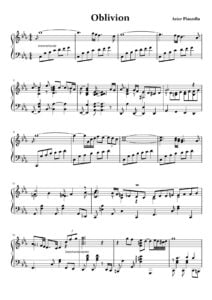 |
|
| Astor Piazzolla – Onda Nueve (Tango) Piano | Astor Piazzolla – Onda Nueve (Tango) Piano | |
| Astor Piazzolla – Otoño Porteño (guitar sheet music) | Astor Piazzolla – Otoño Porteño (guitar sheet music) | |
| Astor Piazzolla – Piano SongBook (Angel, Libertango, 6 Tangos, Estaciones Porteñas) |
 |
|
| Astor Piazzolla – Preludio 9 (Piano) | Astor Piazzolla – Preludio 9 (Piano) | |
| Astor Piazzolla – Río Sena (Tango) Piano | Astor Piazzolla – Río Sena (Tango) Piano | |
| Astor Piazzolla – Romanza del Duende (Piano) | Astor Piazzolla – Romanza del Duende (Piano) | |
| Astor Piazzolla – sheet music – Suite del Angel (Piano) |
 |
|
| Astor Piazzolla – Soledad (Solitude) Full score sheet music | Astor Piazzolla – Soledad (Solitude) Full score sheet music (first page) | |
| Astor Piazzolla – Suite Troileana 2 guitars (Bandoneon, Zita, Whisky, Escolaso) |
 |
|
| Astor Piazzolla – Suite Troileana 2 guitars arr. Sergio Assad (Bandoneon, Zita, Whisky, Escolaso) |
 |
|
| Astor Piazzolla – Suite Troileana arr for Piano (Bandoneon, Zita, Whisky, Escolaso) |
 |
|
| Astor Piazzolla – Tangos for 2 Pianos |
 |
Astor Piazzolla – Tangos for 2 Pianos |
| Astor Piazzolla – Tangus Dei (Piano) |
 |
|
| Astor Piazzolla – The Last Tango Music Of Guitar arr. |
 |
|
| Astor Piazzolla – Tristango (Piano) | Astor Piazzolla – Tristango (Piano) | |
| Astor Piazzolla – Vuelvo Al Sur (10 tangos and other pieces arr. piano) |
 |
Astor Piazzolla – Vuelvo Al Sur |
| Astor Piazzolla -Four, For Tango – Score |
 |
|
| Astor Piazzolla (Spanish Español Ed. 2018 El Ateneo 2020) (María Susana Azzi) Biography Book |
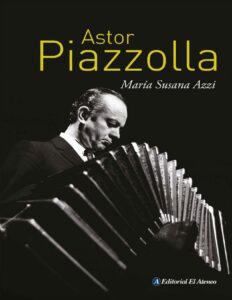 |
|
| Astor Piazzolla (Tango) Balada Para Un Loco – Guitar (letra Horacio Ferrer) |
 |
|
| Astor Piazzolla 100 Años Edicion Aniversario Sus mejores obras para piano |
 |
Astor Piazzolla 100 Años Edicion Aniversario Sus mejore obras para piano |
| Astor Piazzolla 25 Tangos for Clarinet and piano Clarinet Part in Bb |
 |
Astor Piazzolla 25 Tangos for Clarinet and piano Clarinet Part in Bb |
| Astor Piazzolla 28 tangos arranged For Piano |
 |
Astor Piazzolla 28 tangos arranged For Piano |
| Astor Piazzolla Album 20 compositions arr. for Piano |
 |
Piazzolla album |
| Astor Piazzolla Ave Maria (Piano and voice) |
 |
|
| Astor Piazzolla Cinco Piezas For Guitar |
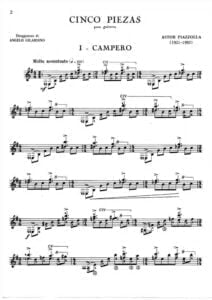 |
|
| Astor Piazzolla Color de Buenos Aires Suite letra Horacio Ferrer |
 |
|
| Astor Piazzolla Contrabajeando Double Bass And Piano Contrabajo Y Piano |
 |
|
| Astor Piazzolla Extasis Piano (Tango) |
 |
|
| Astor Piazzolla Flute or Violin Piano Collection |
 |
|
| Astor Piazzolla For Violin And Guitar (Astor Piazzolla) |
 |
Astor Piazzolla For Violin And Guitar (Astor Piazzolla)_compressed |
| Astor Piazzolla Guitar compositions Collection (Guitarra) sheet music, partituras | Astor Piazzolla Guitar compositions (Guitarra) sheet music, partituras | |
| Astor Piazzolla Horacio Ferrer Chiquilin De Bachin Piano vocal |
 |
|
| Astor Piazzolla La Muerte Del Angel Trio Violin Cello Piano Score |
 |
|
| Astor Piazzolla Le Grand Tango – Two Pianos | Astor Piazzolla Le Gran Tango – Two Pianos | |
| Astor Piazzolla Libertango (Guitar Solo Arr.) With Tab |
 |
|
| Astor Piazzolla Milonga Del Àngel (For Chamber Orchestra) Tangos |
 |
|
| Astor Piazzolla Oblivion (piano solo) |
 |
|
| Astor Piazzolla Oblivion arr. for 2 violins |
 |
|
| Astor Piazzolla Oblivion for Violin or Flute Cello Piano | Astor Piazzolla Oblivion for Violin or Flute Cello Piano | |
| Astor Piazzolla Oblivion Trans Solo Piano | Astor Piazzolla Oblivion Trans Solo Piano sheet music pdf | |
| Astor Piazzolla Oblivion Violin Guitar |
 |
|
| Astor Piazzolla Obras Completas Guitarra For Guitar |
 |
Astor Piazzolla Obras Completas For Guitar |
| Astor Piazzolla Piano Collection |
 |
Astor Piazzolla Piano Collection |
| Astor Piazzolla Piano Meditango |
 |
|
| Astor Piazzolla Romance Del Diablo Flauta Violin and Piano |
 |
|
| Astor Piazzolla Sensuel Piano |
 |
|
| Astor Piazzolla Tangazo for Orchestra Variaciones sobre Buenos Aires para orquestra |
 |
|
| Astor Piazzolla Tango Etudes (for flute or Violin) | Astor Piazzolla Tango Etudes (for flute or Violin) | |
| Astor Piazzolla Tango S V P For Violin Ensemble Solo | Astor Piazzolla Tango S V P For Violin Ensemble Solo | |
| Astor Piazzolla Tangos Arr Phillip Keveren The Phillip Keveren Series Piano Solo |
 |
Astor Piazzolla Tangos Arr Phillip Keveren The Phillip Keveren Series Piano Solo |
| Astor Piazzolla Tanti Anni Prima Ave Maria For Piano solo |
 |
|
| Astor Piazzolla Tanti Anni Prima Ave Maria Violin and Piano |
 |
|
| Astor Piazzolla Vuelvo Al Sur Flute or Violin and Piano | Astor Piazzolla Vuelvo Al Sur Flute or Violin and Piano | |
| Astor Piazzolla y Anibal Troilo- Contrabajeando (Tango) Piano | Astor Piazzolla y Anibal Troilo- Contrabajeando (Tango) Piano | |
| Atlantic Starr – Always | ||
| Atomic Kitten – The Tide Is High | ||
| Atomic The Musical By Philip Foxman And Danny Ginges Piano Vocal Score |
 |
|
| Atonement – Dario Marianelli (For Piano) |
 |
Atonement – Dario Marianelli (For Piano) |
| Au Clair De La Lune – Traditional (Musescore File).mscz | ||
| Audioslave Out Of Exile Guitar TABs |
 |
Audioslave Out Of Exile Guitar TABs |
| Audition (The Fools who Dream) La La Land OST | ||
| Audra Mcdonald Build A Bridge (Songbook) (Audra Mcdonald) Piano Vocal Guitar chords |
 |
Audra Mcdonald Build A Bridge (Songbook) (Audra Mcdonald) Piano Vocal Guitar chords |
| Augustana – Boston | ||
| Aura Lee (intermediate great jazz arrangement) G. Poulton | Aura Lee Jazz | |
| Aura Lee By G. Poulton Jazz Arrangement.mxl | ||
| Aura Lee G. Poulton (Easy version ) | Aura Lee Easy version | |
| Aura Lee Jazz (Musescore File).mscz | ||
| AURORA Conqueror Piano Solo arr. |
 |
|
| AURORA Running With The Wolves |
 |
|
| Aurora – Cure For Me |
 |
|
| AURORA Forgotten Love Piano with lyrics |
 |
|
| AURORA Half The World Away Sheet Music Piano Vocal Guitar chords |
 |
|
| AURORA Into The Unknown from Disney’s Frozen |
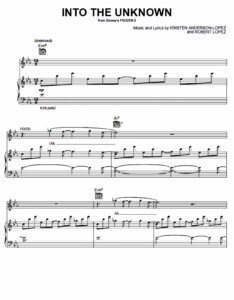 |
|
| AURORA It Happened Quiet Piano Solo arr. |
 |
|
| AURORA Runaway Piano Vocal guitar Chords |
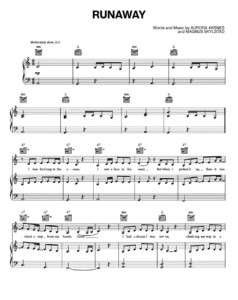 |
|
| AURORA Songbook Sheet Music Anthology Collection | AURORA Songbook Sheet Music Anthology Collection | |
| AURORA The River Aurora Piano Solo arr. |
 |
|
| Automatic Harmonic Analysis of Jazz Chord Progressions Using a Musical Categorial Grammar (Mark Wilding) | Automatic Harmonic | |
| Autour Du Jazz Guitar 4 pièces pour guitare (Thierry Tisserand) |
 |
Autour Du Jazz Guitar 4 pièces pour guitare (Thierry Tisserand) Contents — autour du jazz |
| Autum Song (October) – Tchaikovsky The Seasons (Musescore File).mscz | ||
| Autumn In New York (Guitar Arr. With Tab) | Autumn In New York (Guitar Arr. With Tab) |
